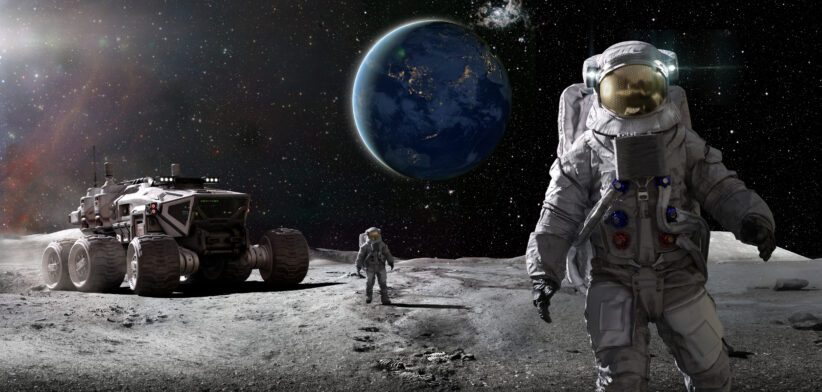By Shane Rodgers
More than 50 years after humans last went for a stroll on the moon, the giant rock is back in fashion and attracting a frenzy of activity.
During the 1960s the so-called “space race” between the United States and Russia created something of a global obsession with landing people on the moon.
President John F Kennedy declared in September 1962, that the US was committed to a manned landing by the end of that decade.
“We choose to go to the moon in this decade and do the other things, not because they are easy, but because they are hard,” President Kennedy told the crowd at Rice University in Houston.
The NASA team made the deadline on July 20-21 (depending on where you were in the world) 1969 when Neil Armstrong famously stepped onto the lunar surface and declared “one small step for (a) man, one giant leap for mankind”.
Hundreds of millions crowded around grainy black and white televisions to watch the moment, which promised to open a whole new frontier for people.
But the moon frenzy quickly died down. There were more landings between 1969 and the final manned mission (Apollo 17) in December 19, 1972.
Then nothing. We had the rocks. We had the data. We had the pictures. Been there. Done that. Got the T-Shirt.
Fast-forward to 2024, the world population is about six billion larger and a relatively small proportion of today’s population were around to watch men on the moon.
The US remains the only country to have landed humans on the moon but other nations are now lining up for missions.
This has been fuelled by the need to use the moon as a base station and experimental area for Mars landings in current decades and a heightened interest in lunar mineral resources.
Last year China announced it would send two rockets to the moon by 2030, including a manned craft.
In January this year, Japan became the fifth country to put an (unmanned) spacecraft on the moon.
Last August an Indian spacecraft became the first to land on the previously unexplored south pole of the moon.
The Indian landing happened just days after Russia’s Luna-25 spacecraft crashed into the moon after experience pre-landing issues.
This was Russia’s first moon mission in 47 years.
Russia announced in November, 2023 that it planned to send cosmonauts to the moon in the 2030s and build a moon base from 2031.
Prior to the US manned missions, the Soviet Union’s Luna-2 mission was the first spacecraft to reach the moon’s surface (in 1959) and the Luna-9 mission in 1966 was the first to make a so-called “soft landing”.
NASA is fully primed for the new “moon race”, gearing up to send astronauts back to the moon’s orbit in September 2025 in Artemis II and back to the surface a year later in Artemis III.
In another indicator of greater lunar activity, Reuters reported last week that the White House had asked NASA to establish a unified time standard of time for the moon and other planets by the end of 2026.
This was needed because an Earth-based clock would likely lose on average 58.7 microseconds per Earth-day, causing a misalignment between Earth and moon time.
While the moon is back in fashion, there is much debate across social media on whether Moon Phase II will attract as much interest half a century later.
At least it might silence the sceptics. Polls in the United States consistently show that between six and 11 percent of Americans believe the original moon landings were faked.








